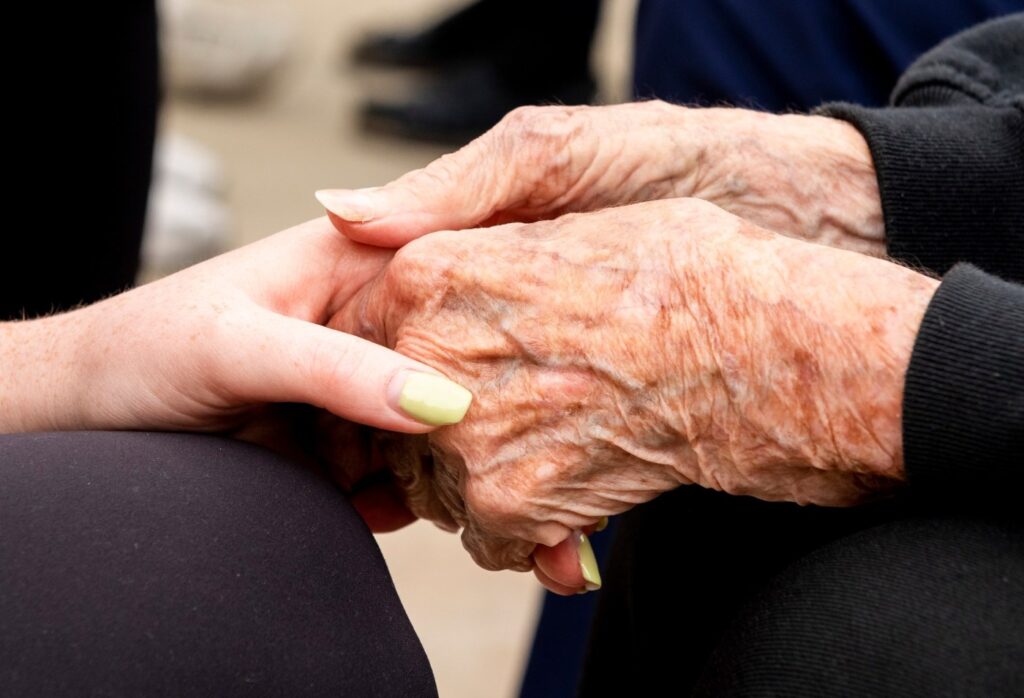
By Dr. Mitchell Tsurudome,
Contributing Writer
Balance is what allows us to stay on our feet, walk, run and even dance.
Unfortunately, for many people, the balance system fails to function properly. Poor balance can lead to falls, difficulty walking — and a fear of being on our feet and moving. One in three people older than 65 years of age will suffer a fall and as many as 50% above 62 report a “fear of falling.”
Mitchell Tsurudome, physical therapist, Vestibular Rehab & Balance Program, MemorialCare Orange Coast Medical Center. (Photo courtesy of MemorialCare)
A healthy balance system is a complex set of reflexes using signals from our eyes, body and inner ear. We use our vision to process our view of the environment, which helps us maintain a sense of balance and see where we are stepping. We use signals from our body, including sensors in our feet and legs, to maintain a sense of stability. We use sensors from our inner ear, called the vestibular system, to sense head movements and positions. These reflexes within the balance system must work together to keep us on our feet. If any of these reflexes or signals fail to function, we are at risk of falling.
Problems in the vestibular system occur in 50% to 80% of the elderly. These problems can include vertigo, which can cause a sensation of spinning, a feeling that you are swaying, lightheadedness, fogginess, nausea, unsteadiness and balance deficits. But there are various conditions related to the vestibular system.
Benign paroxysmal positional vertigo, or BPPV, is the most-common cause of vertigo. Individuals with BPPV often feel as if they are spinning. This sensation is commonly triggered by body or head movements, such as rolling in bed, bending down or looking up. Symptoms are sudden, can last a few seconds to a minute, and can range from mild in intensity to severe.
BPPV can often be characterized as “rocks in the head” or “crystals in the ear.”
This description is a tongue-in-cheek reference to small particles of calcium called otoconia in the inner ear that become dislodged from their respective position and migrate into one of three fluid-filled semi-circular canals. The free-floating otoconia disrupts the normal function of the inner ear and causes a condition called nystagmus, an involuntary movement of the eyes because of the direct relationship of the vestibular system and the eyes. The eyes will repetitively dance around in a twisting motion, causing vertigo.
Most cases of BPPV arise with no apparent cause, but there is some correlation with head trauma, migraines and ear infections. The most typical age for BPPV is 50 to 70 years old, but it can affect all ages, including children. Women are two times more likely to have BPPV than men. Cases can last many years but can also resolve and return spontaneously.
A health care professional with specific training will be able to diagnose this condition while medical imaging, such as an MRI, is not effective.
BPPV can be treated successfully, and in some cases, it can be resolved in a single treatment session. The treatment requires a series of head and body movements that will return the otoconia to its proper position in the inner ear.
Meniere’s disease is another vestibular disorder that produces recurring attacks of hearing loss, tinnitus (ringing in the ear), vertigo or dizziness, lasting 20 minutes to 24 hours, with varying degrees of frequency.
The cause of Meniere’s disease is unknown, but it is believed that symptoms are caused by an excessive amount of fluid in the inner ear. While there is no cure, there are medical treatments available to manage or reduce the symptoms.
It is important to discuss your symptoms with your health care provider to receive the appropriate diagnosis and treatment.
Understanding the balance system is key to improving your balance and reducing your risk for falls. It is important to discuss concerns regarding your balance, dizziness or vertigo with a medical professional, including your doctor or physical therapist.
Here are some tips to prevent falls:
Review your medications with your doctor. Some medications can cause dizziness or make you lethargic or sleepy.
Exercise is important to improve your balance and strength. You are four times more likely to fall because of muscle weakness. Physical therapy can prescribe appropriate exercises for balance and strengthening. For instance, individuals who practice Tai Chi can reduce the risk of falling by 48%.
Have your eyes and feet checked. Poor vision and altered sensation in the feet can increase your fall risk.
Remove clutter and throw rugs from the floor, install grab bars in the tub and next to the toilet, and use non-slip mats in the bathtub and on shower floors.
Take vitamin D and calcium together, which reduces the risk of falls by 50%.
Wear tennis shoes or sneakers, which significantly reduces the risk of falling.
Dr. Mitchell Tsurudome is a physical therapist at the Vestibular Rehab & Balance Program at MemorialCare Orange Coast Medical Center. He holds a doctorate in physical therapy from Azusa Pacific University and is a board-certified orthopedic specialist through the American Board of Physical Therapy Specialties.
